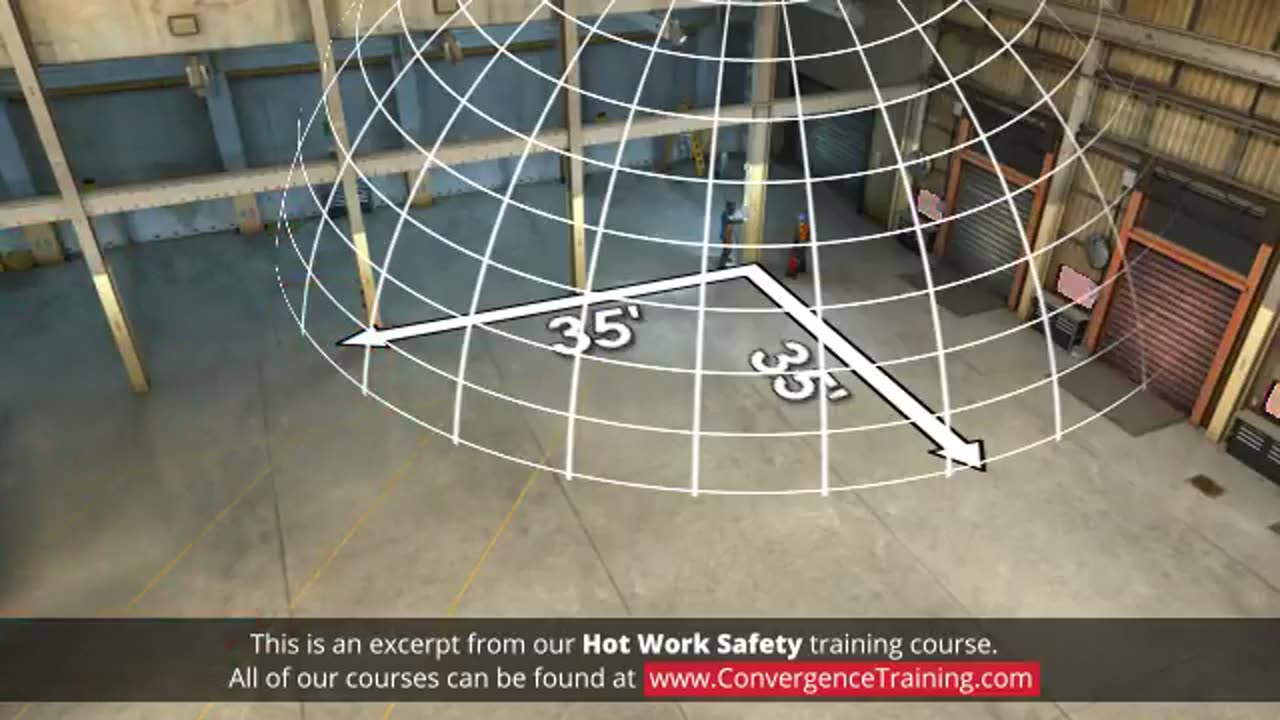Premium Only Content

Hot Work Safety - Firewatch Training
### **Hot Work Safety: Firewatch Training Guide**
Firewatch training for hot work safety is essential for preventing fires during tasks like welding, cutting, grinding, or other operations that produce heat, sparks, or flames. Firewatchers play a critical role in monitoring and responding to potential fire hazards during and after hot work.
---
### **1. What is a Firewatch?**
A firewatch is a designated individual responsible for monitoring hot work activities to prevent and respond to potential fire hazards. Their role includes:
- Ensuring no fires ignite during the work.
- Being ready to extinguish small fires if they occur.
- Alerting workers and activating emergency procedures if a fire becomes uncontrollable.
---
### **2. Key Responsibilities of a Firewatch**
- **Hazard Monitoring**: Observe the hot work area for sparks, heat, or fire.
- **Immediate Response**: Use fire extinguishers or other tools to address small fires.
- **Post-Work Monitoring**: Continue surveillance after hot work is completed to ensure no delayed ignition occurs.
- **Emergency Action**: Sound alarms and assist with evacuations if needed.
---
### **3. Firewatch Training Topics**
#### **a. Understanding Hot Work Hazards**
- Combustible materials near the work area.
- Sparks or molten metal traveling long distances.
- Heat transfer through pipes or surfaces.
- Flammable gases or liquids in the vicinity.
#### **b. Fire Prevention Measures**
- Clear the work area of combustible materials (within 35 feet, if possible).
- Use fire-resistant blankets, shields, or curtains to protect nearby areas.
- Ensure proper ventilation to prevent the accumulation of flammable vapors.
- Verify that all hot work permits are in place before starting.
#### **c. Equipment Familiarization**
- Types of fire extinguishers (e.g., ABC, CO2, dry chemical) and their uses.
- Proper use of fire suppression tools like blankets or hoses.
- Familiarity with alarm systems and emergency protocols.
#### **d. Firewatch Best Practices**
- Maintain a clear line of sight to the work area.
- Stay alert and avoid distractions (e.g., phones or unrelated tasks).
- Never leave the area unattended while hot work is ongoing.
- Know the location of all fire exits, extinguishers, and alarms.
#### **e. Emergency Procedures**
- Activate the fire alarm immediately if a fire cannot be controlled.
- Assist in evacuating the area as per the emergency response plan.
- Report the incident to supervisors or emergency personnel.
---
### **4. Post-Hot Work Monitoring**
- Inspect the area for smoldering materials or hidden sparks.
- Monitor the work area for at least **30 minutes** after hot work is completed (or as specified by site policies).
- Confirm that the area is safe before leaving the site.
---
### **5. Tools and Equipment for Firewatchers**
- Fire extinguishers appropriate for the work environment.
- Fire-resistant clothing and gloves.
- Portable communication devices to call for help if needed.
- Fire blankets or shields for containing small fires.
---
### **6. Regulatory Requirements**
- **OSHA Standard 29 CFR 1910.252**: Outlines fire prevention during welding, cutting, and brazing.
- **NFPA 51B**: Provides guidelines for fire prevention in hot work operations.
- Ensure compliance with site-specific policies and permit systems.
---
### **7. Firewatch Do's and Don'ts**
#### **Do:**
- Stay within the designated work area at all times.
- Maintain focus on the hot work and surrounding environment.
- Regularly inspect fire extinguishers and other tools for readiness.
#### **Don’t:**
- Assume the work area is safe without a thorough inspection.
- Leave your post until the area is cleared and deemed safe.
- Engage in tasks unrelated to firewatch duties.
---
### **8. Certification and Training**
- Firewatch personnel must receive formal training and certification to ensure competence.
- Training should include hands-on practice with fire extinguishers and mock emergency scenarios.
- Refresher training should be conducted periodically to maintain skills.
---
Would you like help creating a detailed firewatch training manual, checklist, or quiz to assess firewatch readiness?
-
 1:15:00
1:15:00
Awaken With JP
10 hours agoMerry Christmas NOT Happy Holidays! Special - LIES Ep 71
150K117 -
 1:42:21
1:42:21
The Quartering
12 hours agoTrump To INVADE Mexico, Take Back Panama Canal Too! NYC Human Torch & Matt Gaetz Report Drops!
121K97 -
 2:23:15
2:23:15
Nerdrotic
11 hours ago $0.77 earnedA Very Merry Christmas | FNT Square Up - Nerdrotic Nooner 453
95.3K11 -
 1:14:05
1:14:05
Tucker Carlson
11 hours ago“I’ll Win With or Without You,” Teamsters Union President Reveals Kamala Harris’s Famous Last Words
184K344 -
 1:58:31
1:58:31
The Dilley Show
11 hours ago $1.42 earnedTrump Conquering Western Hemisphere? w/Author Brenden Dilley 12/23/2024
143K39 -
 1:09:59
1:09:59
Geeks + Gamers
12 hours agoSonic 3 DESTROYS Mufasa And Disney, Naughty Dog Actress SLAMS Gamers Over Intergalactic
97.2K21 -
 51:59
51:59
The Dan Bongino Show
13 hours agoDemocrat Donor Admits The Scary Truth (Ep. 2393) - 12/23/2024
871K2.87K -
 2:32:15
2:32:15
Matt Kohrs
1 day agoRumble CEO Chris Pavlovski Talks $775M Tether Partnership || The MK Show
131K31 -
 28:23
28:23
Dave Portnoy
1 day agoDavey Day Trader Presented by Kraken - December 23, 2024
162K43 -
 59:29
59:29
BonginoReport
15 hours agoTrump, Murder Plots, and the Christmas Miracle: Evita + Jack Posobiec (Ep.110) - 12/23/2024
167K143